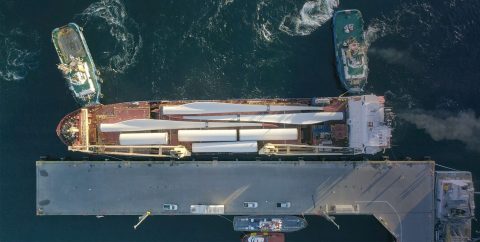
K+N delivers wind turbines for Chilean hydrogen project
Delivery of wind turbine components Kuehne+Nagel
Hydrogen is seen as a major option in the global fight for greener economy and decarbonisation, and one project in Chile is blazing the tail. The Haru Oni project will explore the future of hydrogen as fuel from wind and water.
Want to read more?
You have read all of your free premium articles for this month. Please become a subscriber to keep reading.
Subscribe now!
Take advantage of our exclusive offer to get full access to all premium content.




